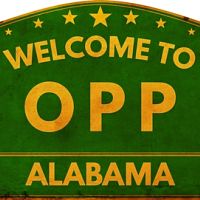
 |
|

|
Code Red (Fire Plan) The Director of Plant Operations in conjunction with the Safety Committee will ensure that the hospital buildings meet the standards for fire contained in the current Life Safety Code and other applicable laws and regulations. POLICY: The Safety Committee will be responsible for the following:  Oversee surveillance of the hospitals Life Safety Status not less than annually in non-patient care areas, and not less than semi-annually in patient care areas, in order to identify deficiencies and monitor and evaluate initiatives to correct these deficiencies. Oversee surveillance of the hospitals Life Safety Status not less than annually in non-patient care areas, and not less than semi-annually in patient care areas, in order to identify deficiencies and monitor and evaluate initiatives to correct these deficiencies. Participate in various activities that significantly affect the Life Safety Status including construction, renovation, maintenance, personnel education, space planning, and hazard surveillance. Participate in various activities that significantly affect the Life Safety Status including construction, renovation, maintenance, personnel education, space planning, and hazard surveillance.GENERAL RESPONSE: A fire is considered to be any uncontrolled flame and/or smoke. When in doubt, respond as if a fire exists. ARACE@ is the acronym used to represent the Fire Plan and describe the response to fire, smoke, or activation of a fire alarm. R = Rescue. A = Alarm Pull Fire Alarm Station and Inform Staff. C = Contain the smoke/fire by closing all doors in the area. E = Extinguish the fire (when safe to do so) and remain at the scene until assistance arrives. FIRE ALARMS: The fire alarm sounds throughout the hospital when activated. The person who initiates the alarm (or someone else at the fire location) calls the switchboard operator giving the location of the fire. If the switchboard operator is not on duty, the call is made to the Third (3rd) Floor Nurses Station. The person receiving the call announces ADr. Red, Zone XX, Dr. Red, Zone XX@ over the PA system. This alerts hospital staff of the fire and its location. Also, this person will call the Fire Department to be sure that they received the alarm. The alarm code that identifies a particular area is defined adjacent to the fire alarm pull station in that area. Employees should be familiar with the fire alarm of their area. If the employee is in the involved zone/floor, he/she should implement each step of the fire plan, relocating patients when obvious danger exists or when directed to do so by Fire Department officials or the Administrator on call. During a fire or drill, staffed areas should ensure that all doors in the area are closed and remain closed, particularly fire and smoke doors. There should also be one person assigned to respond to the drill to assist in the Code Red process (actual or simulated). After the fire is extinguished or the fire drill is over, the official in charge will give the all clear signal. At this time the switchboard operator will page ADr. Green, All Clear@ several times. FIRE EXTINGUISHERS: Fire extinguishers are provided, in accordance with NFPA 10 and City Code, in areas throughout the medical center. In order to ensure that extinguishers function properly, they are regularly inspected and receive regular preventive maintenance. Different types of fire extinguishers should be used to extinguish different types of fires as follows: Type of Fire Type A (Combustible Type B (Flammable) Type C (Electrical) Type of Extinguisher to Use Type A (Water) Type B or C (CO2) Type A, B, or C (Dry Chemical) FIRE DRILLS: Fire drills are conducted in patient care areas at least quarterly on each shift. Drills are conducted for two reasons: 1) Drills allow personnel to practice how they will respond to a fire (training), and 2) Drills reinforce Fire Safety Education (Education). To ensure that drills provide the maximum benefit, personnel should respond as if there were an actual fire. Each fire response is evaluated by a representative of the Safety Committee with regard to the fire alarm system performance, fire response team performance, and staff participation and understanding of the fire response (RACE) as well as department specific fire response issues. Information gained from these evaluations are used to identify problems or opportunities to improve the fire response system as well as safety education programs. |
|
|||||||||||||||||||||
| Mizell Memorial Hospital, 702 Main Street, Opp, Alabama, 36467, (334) 493-3541 | |||||||||||||||||||||||
| ©2025 FastHealth Corporation Terms Privacy | US Patent Numbers 7,720,998 B2, 7,836,207 |